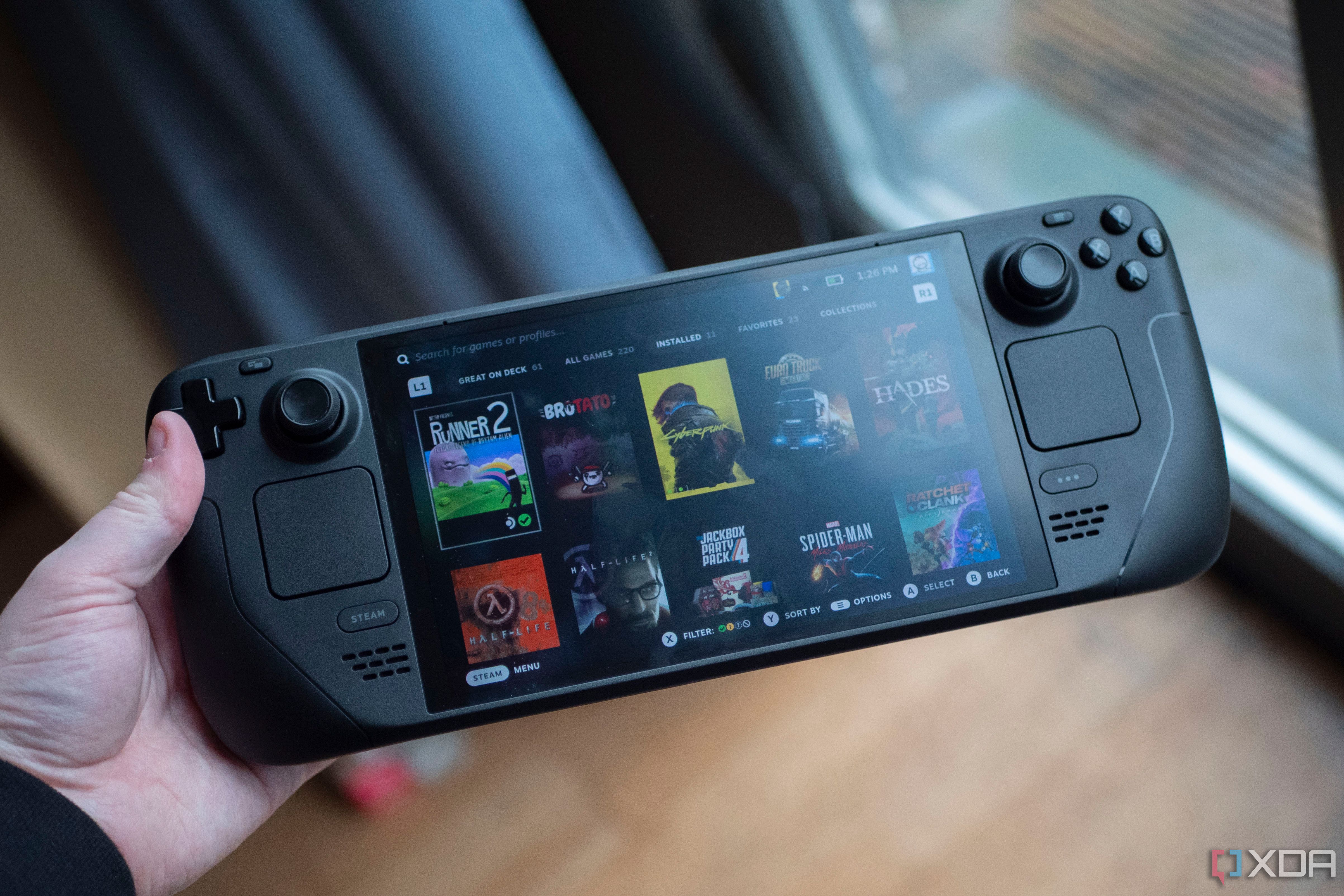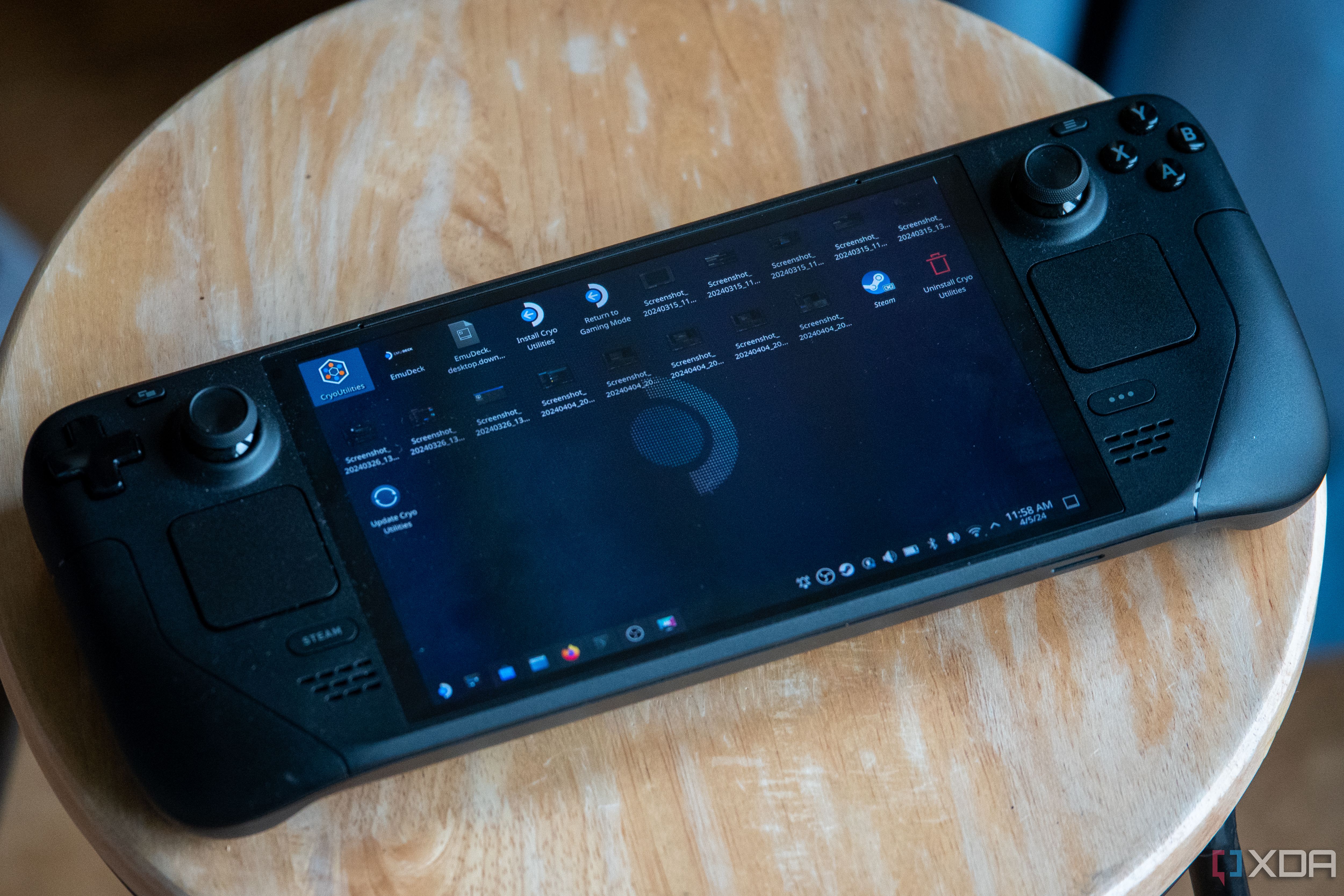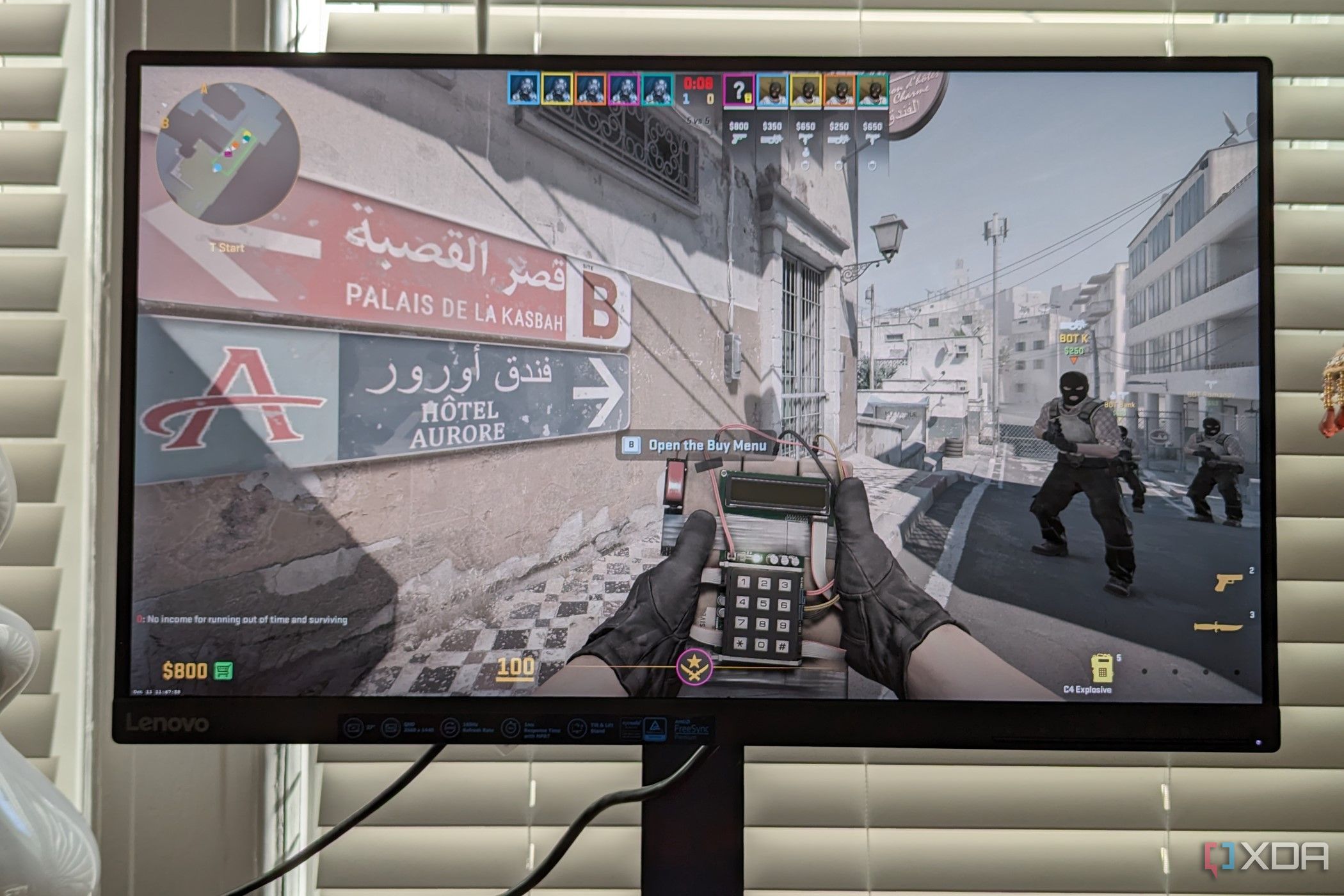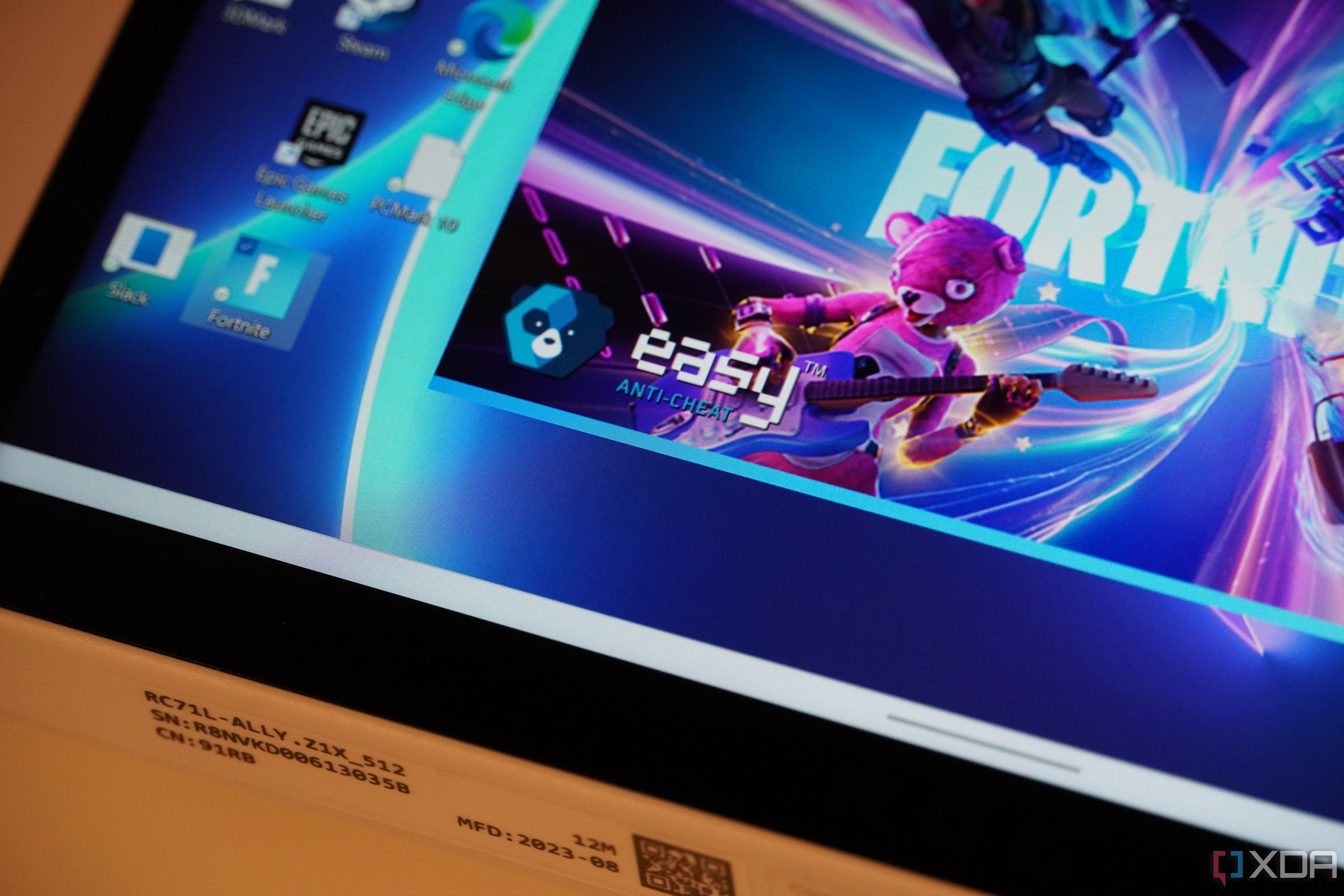PC gaming is an extremely active space, with frequent new hardware launches and features (alongside the never-ending stream of games coming out) that keep things fresh and exciting for enthusiasts. However, you can also argue that things have fallen into a bit of an uninspired rhythm in many ways, and for years, PC gaming was kind of stale. It kept getting better, of course, but no big paradigm shifts or evolutions were happening.
In recent years, though, that’s changed, and believe it or not, it’s mostly thanks to Linux. The rise of gaming on Linux has contributed immensely to PC gaming as a whole, even if you’re not using Linux yourself, and the improvements we’ve seen so far are just the beginning.
Related
4 reasons Valve’s full SteamOS release will change PC gaming again
Valve’s full SteamOS release will change PC gaming again, and here are some of the most important ways.
Bringing PC games to a lot more people
The Steam Deck opened the door
Valve announced the Steam Deck in mid-2021 before it was released in early 2022, and it was a catalyst in shifting the perception of PC gaming. The Steam Deck was a PC, but it was based on Linux, and it relied on Valve’s own Proton layer to help improve compatibility with games designed for Windows. To be clear, Proton wasn’t a new invention at the time of the Steam Deck’s launch, and in fact, it was already nearly four years old. Plus, it’s based on WINE, which is from the early 1990s. WINE originally used WineD3D to translate DirectX graphics API calls to OpenGL and made some games run okay on Linux, and tools like PlayOnLinux were developed to create sandboxed environments that would have tweaks and changes for specific games. Eventually, WineD3D was replaced by translation layers like DXVK, which translates DirectX calls to Vulkan and became a big part of how Proton works today. With all of that said, Proton received a number of substantial improvements in the years leading up to Valve’s handheld, making a very large library of games compatible. This is all part of Valve’s efforts following the failure and discontinuation of the original Steam Machines, which had no compatibility layer of any kind, and now there are rumors that Valve might be bringing that concept back.
Of course, the Steam Deck is seemingly the one benefiting the most from this, but Proton works on any Linux PC, so these improvements benefit anyone who wants to use a Linux PC for gaming. There are more and more compatible games, and they run increasingly better. This expands the potential PC gaming audience to even more people, or it might make it so Linux users don’t have to resort to dual-booting to enjoy their favorite games, simplifying things for everyone. It helps that Valve continues to invest a lot of resources into developing Proton and other technologies that allow games to run on Linux, and it’s gotten to a point where things are good enough that almost anyone can stay on Linux even if they’re interested in gaming.
And that’s to say nothing of the fact that the Steam Deck arguably popularized PC gaming handhelds in general, catapulting the concept into the mainstream, and making people aware that PC gaming experiences were possible without being confined to sitting at a desk in front of a monitor. While some smaller companies had devices like this before, the Steam Deck pushed much larger competitors to enter the space, with Asus making the ROG Ally lineup, Lenovo making the Legion Go, and MSI producing the MSI Claw series.
Some of these, like the Legion Go, even introduce more unique ways to play, with the ability to detach the controllers and use one of them as a mouse. And the popularity of these devices has become so apparent that even Microsoft wants in, partnering with Asus for the upcoming ROG Xbox Ally, powered by Windows 11. PC gaming is more portable, accessible, and versatile than ever, and it’s indirectly thanks to a Linux device.

Related
4 reasons I’m using Proton GE on the Steam Deck, and you might benefit too
If you’re facing issues in some games, Proton GE might be the answer.
Games are more optimized now
Handhelds are not powerful
The Steam Deck (and Linux, indirectly) has also made it so that games are now more optimized than ever to run on low-end PCs. Yes, the Steam Deck is a relatively weak device, and now that it’s over three years old without an upgrade, it feels that much more behind the times, but that’s actually a benefit in a way. There is only one performance variant of the Steam Deck, and developers have to target it if they want to appeal to this broad user base, so games have to be much more optimized for low-end devices than they would be otherwise… or, at the very least, include graphics quality options that will run on them, like in the case of Cyberpunk 2077.
This benefit has, of course, been expanded to other gaming handhelds, too. AMD started designing chips specifically for handhelds with the Z series processors, and while there’s a bit more variation there, it still provides a slightly more uniform user base for developers to target. Even if you don’t get into specific processors, the simple fact that all these gaming handhelds have to pack weaker specs than a typical gaming PC means developers have to be more careful with optimization to allow games to run on them. It’s hard to frame the “hardcore PC gamers” as just the ones with the high-end PCs nowadays, because PC gaming handhelds are significantly weaker yet still growing in popularity.
On top of that, getting back to the Steam Deck and Linux, it’s worth noting that Valve’s handheld is one of the most popular in the PC space, as suggested by a recent study from IDC (via The Verge). In 2024, 48% of all PC gaming handheld shipments among the big players (excluding small Chinese companies like Ayaneo and One Xplayer) were attributed to the Steam Deck, and in 2023, it was over 50%. Sure, it may not outsell Windows handhelds collectively, but it’s still a huge piece of the pie and an important collective of users to consider when releasing a PC game these days.
That popularity means developers have to make sure that the game not only runs well on the hardware but also works either natively or through the Proton layer. Plus, it’s not just Valve doing all the work; the Linux Foundation’s efforts have even forced Nvidia to adopt a more open approach for its Linux drivers, and the proliferation of Linux has forced the company to improve its drivers massively, especially if the company hopes to get involved with the PC gaming handheld trend at some point in the future. All of this means gaming on Linux is better than ever, and improving performance on both Linux and Windows benefits everyone.

Related
DOOM: The Dark Ages proves games can still be optimized properly
While many other games seem to struggle with optimization, DOOM: The Dark Ages shows how it can be done right.
Making a more friendly UI
Taking the stress out of PC gaming
PC gaming may have a lot of benefits, but for a lot of gamers who are used to consoles, there’s definitely a hurdle to clear in terms of making the experience easy to understand and usable with different input methods. Playing at a desk with a mouse and keyboard works fine, but if you have a Windows-powered gaming handheld, that experience is kind of terrible, and the same goes for using your PC connected to a TV in the living room (unless you want to have a mouse and keyboard on your couch).
Through SteamOS and Linux, Valve also changed this. At launch, SteamOS featured the most gaming-friendly UI we’d ever seen on a gaming handheld up to that point, and arguably, it still holds the crown to this day. Navigation is easy with a controller, and you’re never forced to switch to a desktop environment to set something up, unless it’s a more advanced tweak or change. Things just work, and you don’t have to worry about making tweaks, adjustments, or installing specific drivers, unless you want to. Unlike it would have been in the past on a Linux-based gaming PC or even other Windows handhelds to this day, it’s not a necessity. It’s the most seamless PC gaming has ever been on a handheld.
Valve could have kept that experience exclusive to the Steam Deck, but instead, the company changed Steam Big Picture mode on every platform to offer pretty much the same experience. It won’t get you all the integration with OS features, and it won’t be exactly as seamless as SteamOS, but everything related to Steam itself is made incredibly easy. Now, Windows-based gaming handhelds can benefit from that same UI, but not only that, gaming desktops can too. If you want to use an HTPC (home theater PC)-like setup with a gaming controller, you can do it far more easily now. Valve’s approach is so beloved by users that even traditional Microsoft partners like Lenovo have embraced SteamOS with a handheld like the Legion Go S, and that’s only the first of the potentially many SteamOS handhelds we’ll see.
And of course, Valve’s approach taught everyone else that they also need to make more user-friendly experiences for gaming handhelds. Devices like the ROG Ally and Lenovo Legion Go come with their own proprietary software in an attempt to improve the experience of using a controller and touch input in Windows. Plus, even Microsoft appears to accept that Windows just wasn’t really suited to the form factor, as it clearly learned when making the Xbox app a lot better on Windows. Recently, the company even added Steam integration to the Xbox app in order to make it easier to access your entire library in one place. It’s clear Microsoft is trying to prepare the upcoming ROG Xbox Ally to be as close of a competitor to the Steam Deck as possible, and competition nearly always benefits consumers by pushing companies to compete against each other with new features, improvements, and even cheaper products. Valve (and Linux)’s impact on the PC gaming sphere can’t be understated.

Related
6 reasons SteamOS is better than Windows on gaming handhelds
Save our (con)soles
Anti-cheat is the big barrier now
The big hurdle for Linux gaming
With all of this in mind, there’s only one major hurdle for gaming on Linux now, and that’s anti-cheat software. These days, a lot of anti-cheat measures rely on kernel-level checks, which, as my colleague Adam explained a while back, aren’t easy, or even feasible to implement on Linux in any kind of wide-ranging approach.
There are numerous reasons for this, including the multitude of Linux distributions and even modified Linux kernels that users can install or come with those distros. Kernel-level anti-cheat can’t easily verify that a given kernel, operating system, or even device that’s plugged into your computer is trustworthy because there are so many different types of devices out there, and there’s no central signature system that can be used to tell if the kernel is trustworthy or a connected device with a loaded driver is secure. Plus, many cheats for the games that run on Linux run as the root user, from the /root directory, and there’s no way for a user-level process on Linux to tell when a more privileged user is accessing the memory space of its process. Even if that were figured out, a Linux user could, in theory, build their own kernel with certain modifications to give them an advantage in online games, so it’s not easy to just write a blank check (so to speak) to any Linux installation or hardware configuration and assume it will play by the rules.
For drivers, especially, there’s simply no easy solution. Whether you love or hate kernel-level anti-cheat is irrelevant at this point, as its existence is so ubiquitous, and many gamers believe the strengths that the companies behind it tout, so suddenly removing the requirement to benefit Linux users would likely result in backlash without another advanced system ready to take its place. This is another issue when it comes to driver certification, too, as Direct Memory Access (DMA) devices on Windows either need to be certified as such or spoof another device with a leaked certificate that’s already been whitelisted by Microsoft, as all of these anti-cheats require that every driver loaded by the Windows kernel be signed. This is also why IOMMU is becoming so popular amongst anti-cheat solutions as well, as it allows for verification that a loaded driver is accessing a valid memory address consistent with its expected behavior.
To Valve’s credit, the company has been putting in a lot of time to research this field, deploying machine-learning-based solutions in the form of VACnet to try and catch cheaters in Counter-Strike 2, yet kernel-level anti-cheat clients are still required for any of the third-party matchmaking services that are almost a requirement in that particular game once you’ve reached a high-enough skill level. I have no doubt a solution could be conjured up if there were enough incentive to do so, but it may take a long time before Linux gaming is popular enough that companies are willing to invest in developing a robust solution.
Still, if you’re mostly a single-player gamer like me, there’s a good chance every game you want to play works nearly flawlessly on Linux these days, and that’s a big deal. It’s mostly the big esports or online games that have the potential for issues.

Related
Proton is so good these days, I wish I could make the switch to Linux
As a gamer, there’s only one thing holding me back.
Linux has made PC gaming exciting
As someone who’s not typically interested in the PC gaming space, I can easily say that Linux and SteamOS have been one of the biggest drivers of excitement and interest in the PC gaming industry in the last few years. Valve’s efforts have expanded the gaming audience in terms of operating systems, devices, and general usability, making it more interesting than it has ever been for the majority of people. And I believe a lot more exciting developments are still coming as more companies put in the effort to create a better experience across the board.

